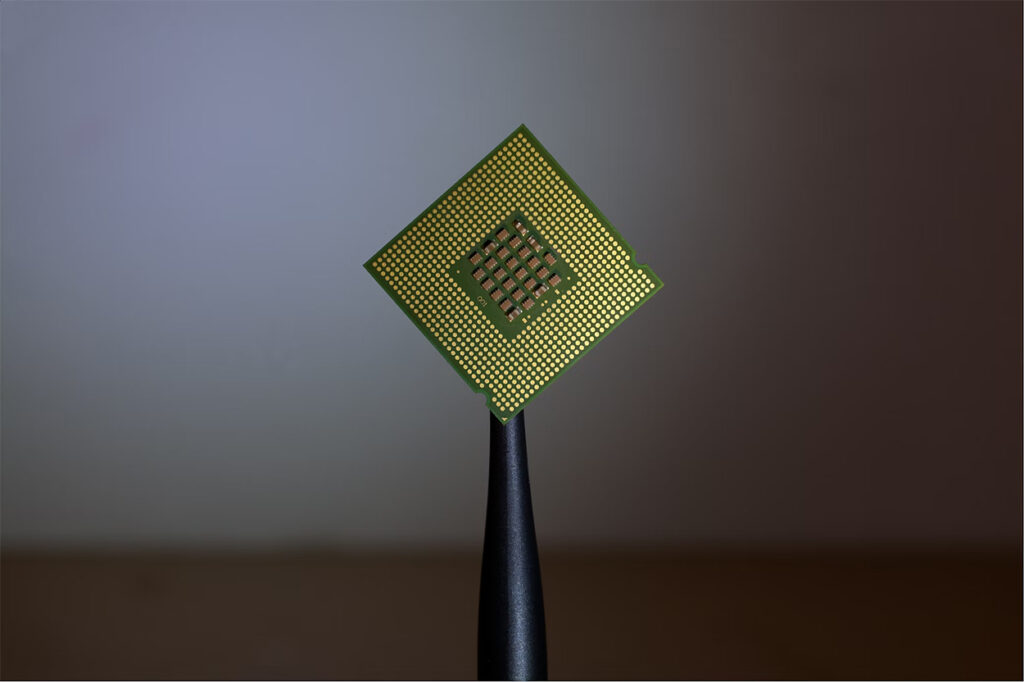Microsoft Challenges Nvidia and Intel with New AI and Computing Chips
Unveiling a new era: Microsoft’s innovative chip technology at ignite
At the Ignite conference in Seattle, Microsoft unveiled two breakthrough processors that promise to revolutionize artificial intelligence and general computing. In the extremely competitive AI industry, Microsoft’s first AI processor, Maia 100, competes with Nvidia’s AI graphics processing units. The second, the Cobalt 100 Arm processor, competes in general computing with Intel CPUs. Microsoft’s strategic move, which has $144 billion in cash as of late October, demonstrates the company’s commitment to innovation and alters the cloud infrastructure landscape, providing customers with more flexible and powerful computing alternatives. Microsoft’s spectacular Ignite launch demonstrates the company’s readiness to take on industry titans and transform technology.
Revolutionizing AI and computing: a closer look at Maia 100 and Cobalt 100

The Maia 100 and Cobalt 100 chips represent Microsoft’s ambitious stride into the highly specialized world of AI and computing. The Maia 100, specifically tailored for artificial intelligence applications, stands poised to challenge Nvidia’s established dominance in AI graphics processing units. Its advanced capabilities and intricate computational prowess are a clear testament to Microsoft’s dedication to pushing the boundaries of AI technology. This bold entry into the AI space signifies Microsoft’s intent to be a major player in the next generation of technological advancements.
Simultaneously, the Cobalt 100 Arm chip emerges as a versatile and powerful solution for general computing tasks, directly challenging Intel’s dominance in this arena. This introduction is more than a technological achievement; it represents a strategic move to diversify and strengthen Microsoft’s hardware offerings. By integrating these chips into its cloud services, including the Azure platform, Microsoft aims to revolutionize the market with more robust and efficient computing solutions. The integration promises enhanced performance and efficiency, catering to the ever-growing demands of cloud computing and AI applications. A closer examination of the Maia 100 and Cobalt 100 chips underscores Microsoft’s commitment to innovation and its pivotal role as a catalyst in the evolution of AI and computing technologies.
Navigating the clouds: Microsoft’s strategic play in a competitive arena
In the competitive cloud computing market, Microsoft’s introduction of the Maia 100 and Cobalt 100 chips at the Ignite conference represents a significant strategic shift. Holding a notable 21.5% cloud market share in 2022, just behind Amazon, Microsoft is intensifying its cloud infrastructure offerings, following in the footsteps of tech giants like Alibaba, Amazon, and Google. This move, underpinned by Microsoft’s substantial cash reserves, signals its intention to not only compete but also innovate in the cloud services domain. The new chips are set to enhance the performance and efficiency of Microsoft’s Azure cloud services, offering clients more advanced and customized computing solutions. This step reflects Microsoft’s proactive approach to shaping the future of cloud computing, solidifying its role as a key player in the industry.
Charting the future: implementation and the road ahead for Microsoft’s chips
The IT industry is changing as Microsoft introduces the Maia 100 and Cobalt 100 CPUs. Microsoft’s Azure cloud will begin selling Cobalt-chip virtual computers in 2024, indicating a specific deployment date. These advancements are being tested in Microsoft services such as Bing’s AI chatbot and GitHub Copilot, proving their potential to enhance a wide range of applications. Microsoft’s strategic planning extends beyond deployment to include how these chips may alleviate GPU shortages and boost cloud computing. This ground-breaking chip design demonstrates Microsoft’s commitment to shaping technology rather than just competing in the market.

